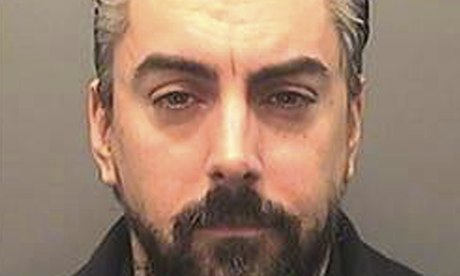
– Zia Akhtar (Grays Inn, London, UK) plawgraduate@gmail.com
Introduction
The government is to propose a new law in 2014 that will criminalise breach of the duty of care by those medical staff who are grossly negligent or who abuse their patients. There will be a sanction of a five year jail term when there is a finding of culpable negligence that results in serious injury or death.
The offence would transfer liability to hospitals or those involved in providing aftercare who are ‘guilty of willful or reckless neglect or mistreatment’ if they perform their task negligently. The intention of the statute would be to punish those who fall well below the standard of care expected of medical professionals. The scale of penalties would reflect the regime established in the Mental Capacity Act 2005, which allows for fines, imprisonment for a maximum of five years, or both.
This upcoming legislation, announced in December 2013, has followed the report into the deaths that occurred in the Mid Staffordshire hospital between the period of 2005-09. There were an estimated 1,200 people who died due to poor care of patients who were left in the wards without any supervision. It resulted in two inquiries chaired by Robert Francis QC into the cause of the deaths at the hospital.
The Francis report disclosed that the hospital hierarchy was more concerned with meeting their targets of resource allocation than the basic levels of primary care of the patients. The Report which was published in February 2013 made 290 recommendations for improvements in NHS healthcare but not one medical professional faced prosecution as a result of findings of what went wrong at the Mid Staffordshire Hospital.
In a review of criminal investigations into medical error conducted by a University of Manchester Law department team, it was shown that it is difficult to convict doctors and nurses for deliberately failing their patients. Of the 75 Crown Prosecution Service files they studied, just 5% resulted in prosecutions of those medical staff who were reported for criminal negligence.
These findings were set out in Professor Margaret Brazier’s public lecture ‘My Doctor is a Criminal’ on 23 April 2013 which expressed the view that ‘bad’ doctoring should be a crime. She stated that the reasons why charges are not being brought for criminal negligence is the requirement that the case is the causation and the burden of proof. This is dependent on the omission or the commission of an act that may have made a substantial contribution to a patient’s death.
There are mitigating circumstances, such as the patients’ previous poor health, infirmity or old age, which can present a difficulty for the prosecution, and were a factor in the indictments were being withheld in the Mid Staffordshire deaths. This was despite there being evidence of deliberate or reckless infliction of unnecessary suffering on the patients. It did not lead to a single negligence based action but the announcement of the Mid Staffordshire NHS hospital trust that served 275,000 people in the region to be closed at the end of 2013.
Need for extending the breach of duty
There are increasing concerns being expressed in the UK of hospitals providing sub-standard care and there has been an incremental increase in the level of claims to the NHS from patients. The NHS litigation authority official figures for the year 2012-13 showed a 20% rise in the number of patients seeking compensation from the previous year.
The level of damages sought from the NHS was approximately 19 billion from patients, nearly 1/5 of its budget based on claims of negligence. There was a sum of £1bn spent on settlements last year, but around one quarter of costs were absorbed by legal fees, mainly in payments to claimants’ lawyers under a “no-win, no fee” system which means legal firms can charge up to £900 an hour for their services if claims are successful.
The impact of the below standard care in the UK is that elderly patients face a higher risk of death when placed in general wards instead of critical care wards after unplanned surgery. The European Surgical Outcomes Study (EuSOS) Mortality after Surgery in Europe: A 7 day cohort 2012 (published in the Lancet’s September 2012, vol.380, no. 9847, pp.1059 – 1065), found that hospital inpatients had a 3.6% chance of dying, whilst in Germany the figure was a very low at 2.5%. The patients who died were in the main elderly, and the findings also stated that there were insufficient resources being invested in the facilities at the hospital to care for the critically ill which increased the mortality rates.
The study coordinator Dr Rupert Pearse from the London School of Medicine at the Queen Mary College, University of London states in the report:
‘The substantial variations in mortality between countries highlight the urgent need for national and international strategies to improve care for this group of patients. Nearly three-quarters of patients who died were never admitted to intensive care. Failure to allocate critical care resources to patients at greatest risk of death is a serious public health concern for patients undergoing surgery in Europe.’
There will have to be substantial improvements in the infrastructure and quality of medical treatment. This can be inferred from the Channel 4 news special report on September 2013 prepared by emeritus Professor Barry Jarman of Imperial College whose input went into the Bristol Royal Infirmary Inquiry and Mid Staffordshire hospital scandals. These are about the level of care and mortality rates in UK hospitals. The study demonstrates that death rates in UK hospitals were considerably higher than in US hospitals and among the worst anywhere in Europe.
The average HSMR for England was 122.4, making it the highest of the seven countries examined. The average HSMR for the US was 77.4. The HSMRs in the NHS were 58% higher than the most favourable country, the US, and in 2012 a patient in the average NHS hospital was still 45% more likely to die in hospital than if they had been admitted to a US hospital. The figures also confirm that patients in hospitals aged over 65 fared worse and were five times more likely to die of pneumonia in hospital in England and twice as likely to die from a blood infection (septicaemia) than if they were admitted to a hospital in the US.
Establishing Causation in the injury
The reason for the high threshold in proving any wrong doing against medical health professionals that establish their liability is the casual link between the act and the resulting death or injury. There are three elements in an action for negligence which need to be satisfied claim which are: if there was a duty of care, causation and proof of actual damage. The majority of claims in negligence cases fail because of the lack of sufficient causation between the injury or death and the negligent conduct of the staff.
In the medical profession the decision of what is acceptable care and what is substandard care is measured by reference to whether a responsible body of medical opinion considers a particular instance of care was substandard. The subsequent advances in medicine have to be ignored. If the hospital trust finds a reputable medical expert who states that the care was acceptable then the burden of proof on the claimant is very onerous to discharge in order to succeed in a civil claim. The breach of duty of care has to be of such degree that no reasonably competent medical expert in the same discipline would have acted in that way.
The higher degree of immunity extended to the medical profession was originally intended so that a hospital authority could not be liable for negligence in matters involving the complex exercise of professional skills. Under English law there is a legal precedent known as the Bolam principle where if the hospital trust can provide a witness who is a reputable medical expert, who states that the care was acceptable, then the claim fails unless it could be shown that the expert acting was wrong.
In Bolam v. Friern Hospital Management Committee [1957] 1 WLR 582, Lord McNair in his judgment stated as follows:
‘A medical professional is not guilty of negligence if he has acted in accordance with a practice accepted as proper by a responsible body of medical men skilled in that particular art . . . Putting it the other way round, a man is not negligent, if he is acting in accordance with such a practice, merely because there is a body of opinion who would take a contrary view.’ pp 586-587
This test has been moderated by the House of Lords’ judgment in Bolitho v City & Hackney Health Authority [1997] 4 ER771 whereby the court will be the arbiter of fact, determining whether the injury had been caused by the defendant’s negligence and not the medical practitioner. However, their Lordships emphasised that they would hold a procedure that was in accordance with a sound body of specialist opinion to be negligent only in “a rare case”.
The question of a hospital authority’s negligence is one of primary liability for breach of its own duty to the patient. The court determines the actions of the individual who is a servant of the hospital on the basis of vicarious liability but the claimant of the burden of showing the procedural and legal causation. This is the most arduous task where the patient or their representatives fail where it is not prima facie evident that there had been negligence by the medical practitioner who was carrying out a duty imposed by law.
Lack of a Duty of Candour
In English medical law there is no legal duty of candour and the courts have rejected any imposition of a duty of care to the parents and the matter. This matter has been the subject of appeal to the European Court of Human Rights under Article 2, granting a Right to Life. The parents of the patient who had died applied for the hospital to disclose to them the records of his illness.
There was an admissibility hearing before the Strasbourg Court in Powell v UK Application (1999) no 45305/99 where the ECHR held that the ‘doctors have no duty to give parents of a child who died as a result of their negligence a truthful account of the circumstances of the death, nor even to refrain from deliberately falsifying records’.
In the aftermath of the decision, the General Medical Council has issued guidelines to medical practitioners to have a more informed relationship between the patient and the doctor. However, it stops short of the legal obligation of disclosure. The UK Government refused the attempts to introduce a statutory Duty of Candour in the Health & Social Care Act 2012, which has brought in the role of the Quality Care Commission and developed Monitor, the body that currently regulates the NHS. It has not established a legal duty of candor but only an ethical duty that exists between the doctor and the patient that is privileged.
There is consensus in the medical profession that there is no relationship between the tort system and patient safety that requires a duty of candour. J Miola, in ‘The tort of negligence and patient safety’ (pp 41–52 in J Tingle and P Bark, Patient Safety, Law Policy and Practice (Abingdon, Routledge, 2011)) states that ‘the law of tort is not designed for patient safety, and is only a retrospective remedy to compensate those who bring legal actions. The deterring of bad practice is secondary to the main purpose of compensation’.
The main justification for not imposing this duty of candour as a legal requirement is that the compensation is that the hospital trust does not want to be held accountable for failure of the procedures at the hospital which are an administrative matter. The law of tort offers only limited protection for patient autonomy despite seeming to punish the negligent failure to disclose required information such as prior to surgical operations.
Statutory offence and causation element
The government’s proposal of a new offence of ‘willful or reckless neglect or mistreatment’ will come on to the statute books in the foreseeable future. The difficulty of proving a causal link to the injury or death of the patient and the breach of legal duty of the doctors and medical professionals is that the principle of corrective justice serves to pay damages to the victim but it does not address the issue of the unsafe environments in which such substandard medical cultures originate.
However, prior to the new criminal offence, which the government has stated it will introduce in the near future, the criminal negligence claims for breaches of patient safety have proceeded on the basis of the failure of a combination of individual and system factors. The offence that most often comes up for possible indictment against individuals is gross negligence manslaughter but the difficulty of proving causation is also very onerous in this case.
The leading cases in establishing individual culpability in defining gross negligence are R v Adomako [1995] 1 AC 171 and R v Misra and Srivastava [2004] EWCA Crim 2375. This is an abstract concept which is incapable of objective measurement and potentially unfair to those indicted given the difficulty of ensuring an objective and consistent interpretation of a common law definition. The challenge of establishing causation is the main factor, as also appears to be in the case of the statutory offence of corporate manslaughter.
The issue that comes to the fore is whether there is a correlation between the criminal law and patient safety, and does it prevent the unsafe and bad practices of the legal profession. Oliver Quick states in ‘Patient safety and the problem and potential of law’ (Journal of Professional Negligence, Vol. 28 No. 2, 2012 pp 79-99), ‘we might speculate that criminal law is likely to be unhelpful in terms of further fuelling a culture of secrecy and shame about errors. Whilst we lack direct evidence, manslaughter prosecutions are likely to be harmful rather than helpful to safe healthcare’.
The reason for there to be few criminal negligence prosecutions is because of the causation requirement. The problem that is encountered in bringing charges is that it may encourage the culture of secrecy and will not be able to assist candour. It will be imprudent of an organisation to implicate other members in the crime alleged to have been committed by an individual or some members of the medical trust. Fatal medical mistakes that may involve the criminal justice system in the form of an indictment for ‘willful or reckless neglect or mistreatment’ may be a way forward but the charges will have to deter and to penalise criminal negligence.




